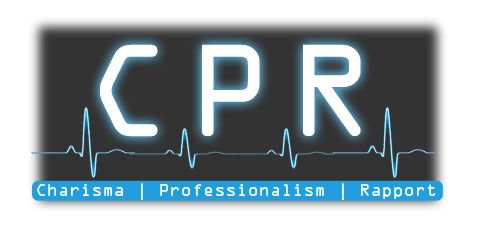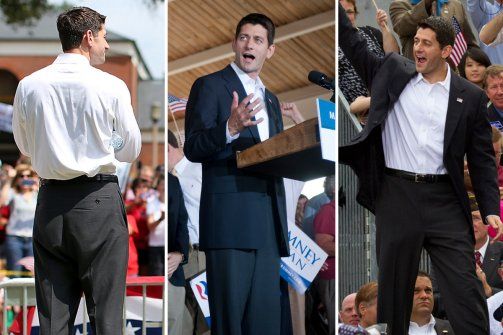Charisma
CPR: Breathing Life Into The Debates
Decoding the Debates Using CPR: Charisma, Professionalism, & Rapport
Posted October 9, 2012

Coming into Thursday’s debate between Vice President Joe Biden and Representative Paul Ryan, the pressure is on both to excel. Expect nonverbal communication to play a pivotal role. Biden will be feeling the pressure to win and take the momentum away from Team Romney/Ryan, while Ryan will be looking to prove himself against a much more experienced politician.
Given the notable attention nonverbal communication analysis received both prior and after the first presidential debate, expect the same for the Biden versus Ryan dual. Although anyone can espouse comments about what certain gestures mean, a particular tone used, body posture and orientation, and appearance, I base my preview of the upcoming debate on scientific research that is easy for you to use and apply to your life (professionally and socially).
The CPR model of Charisma, Professionalism, and Rapport allows you to not only notice what both Biden and Ryan are doing during the debate, but also allows you to apply it to your life too.
When looking to see if either will be effective, my CPR model is a variation of the social semiotics formula I previously utilized to analyze nonverbal communication. The three simple steps are:
- Semantics: Identify the specific nonverbal communication cue being used (hand gesture, facial expression, posture, etc.)
- Syntactics: What other gestures, and words, are being used. These clusters impact each other in a gestalt manner.
- Pragmatics: Determine what the nonverbal action means based on the context of the situation and on previous research.
Below, CPR is explained and what to look for during the debate.
Charisma
Possessing charisma means you have the ability to attract, motivate, and influence others. You can think you possess charisma all you want but it is something others determine if you possess (or not). Charisma includes being sensitive, expressive, and control in regards to your words and actions. Other experts, such as Olivia Fox Cabane, describe three types of charisma as power, presence and warmth.
The elements of charisma are further explained based on the research of Ronald Riggio:
Expressive. Making sure the words you say are congruent with your nonverbal facial expressions, posture, and gestures contributes to the perception of the speaker being perceived as confident, dynamic, and energetic. Expect both to use hand gestures frequently to stress certain statements. Hand movements, in the form of batonic, deictic, and emblemic gestures are the nonverbal equivalents of the written exclamation point and adding italics, bold, and underlining.
Sensitive. Understand the audience and ensure your gestures and facial expressions are appropriate. In the previous debate President Obama looked down frequently and often took extended notes while Governor Romney spoke. Many people reacted negatively to this.
Control. Biden will have to avoid any verbal gaffes and the corresponding body language that is associated with it. In previous debates, Al Gore’s audible sighs draw many negative reviews, as did the cold and robotic response of Michael Dukakis. Ryan, often described as a policy wonk {see the third version}, will have to express what can easily be complex topics in a manner that both not dull and robotic. Creating an even greater issue for Ryan is he will not be able to use graphs that he often relies on to explain things in an easily digestible manner.

Will any of these gestures previously used by VP Biden be displayed during the debate?
Professionalism
This means being prepared and knowing your content. With Biden, 69, being a the former chair of the Senate Foreign Relations Committee and having a wealth of negotiating experience and Ryan, 42, having detailed experience and knowledge of policies and budget matters, both can easily say they have this area covered.
Professionalism also includes dressing appropriately for the occasion, something that Ryan has previously been criticized for. The New York Times, LA Times, and Washington Post have all commented on Ryan, despite being fit, wearing oversized clothing.

I hope you are not asking "What's wrong here?" Photo composite from TheDailyBeast.com
Another aspect of professionalism is being able to articulate your knowledge. This includes everything related to speaking such as tone, speed, pauses and filler words such as “um” and “ah.”
Rapport
For rapport to be established, it needs to be developed by two people. Considering we as viewers are solely participants and mainly at locations far away from the actual debate location, all Biden and Ryan can do are nonverbal actions that can contribute to rapport being established. Rapport includes mutual attentiveness, coordination, and positivity. Although Biden and Ryan are challenging each other, viewers also want to see a level of rapport established between each.
This includes each displaying eye contact (not too much, not too little) when listening to the other while he is speaking and also making eye contact with the camera when speaking. Eye frequently is listed at the top of the when people explain how to develop rapport, and equally listed that when it is not present, its absence creates a negative impression.

Eye-gaze is effective, staring like a cow is not.
Other nonverbal elements frequently listed as contributing to rapport include smiling, direct body orientation, and open-handed gestures.
Remember that when you apply the CPR model to observe the nonverbal communication of both Biden and Ryan, while also applying it to your own daily interactions, that each element of CPR is interconnected; being effective (or ineffective) at one will effect the others.
Follow my tweets during the debate at @NonverbalPhD.




